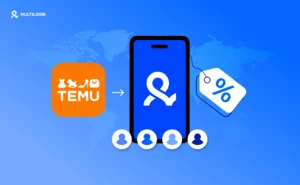Table of Contents
Application Fingerprint
An application fingerprint is like a digital ID. Every time you open an app, it collects small technical details about your device and how you use it. Put together, those details form a fingerprint that helps the platform recognize you.
What is an application fingerprint?
When you run an app, it notes things such as:
- your device and operating system
- the app version you’re using
- your network connection or IP address
- special identifiers tied to that app
All of this data becomes the application fingerprint. If you return with the same setup, the app “remembers” you. If the fingerprint changes, the platform may see it as unusual activity.
Why application fingerprints matter?
You care about application fingerprints because they directly affect:
- Account trust – if your fingerprint changes too often, the platform may block your login or ask for extra checks.
- Privacy – detailed fingerprints can reveal more about your device and behavior than you expect.
- Automation – if you run multiple accounts or use apps across devices, fingerprints decide whether you look stable or suspicious.
How application fingerprints work?
The process is simple:
- Each time you open an app, it collects technical data.
- That data is compared to the stored fingerprint.
- If it matches, you continue without friction.
- If it doesn’t, the app may flag the session or ask you to verify.
Example: If you access your banking app from two different phones, each will create a unique application fingerprint. The bank will likely send a verification code before letting you in.
Benefits of application fingerprints
- Fraud protection – helps platforms spot stolen credentials or unusual activity.
- Stronger security – reduces the chance of unauthorized logins.
- Reliable sessions – trusted users face fewer interruptions.
Challenges and risks
- Privacy issues – apps can track more than you realize.
- False alerts – even simple changes like an OS update can alter your fingerprint.
- Scaling limits – managing multiple accounts can be hard when each session looks “new.”
How to prevent application fingerprint
You can’t control the fact that apps try to create a fingerprint, but you can control what data they see. The goal is to avoid looking “suspicious” or leaving patterns that platforms can link back to you. Simple habits help, but the only way to fully prevent application fingerprints from exposing your real setup is by using tools built for this purpose.
Here are the main steps:
Keep your setup consistent – frequent changes in operating system, IP, or device details make your fingerprint unstable and trigger checks.
Separate your sessions – don’t run multiple accounts in the same environment. Each account should have its own isolated profile.
Limit tracking points – clear cookies, manage identifiers, and avoid leaking unnecessary details across apps.
Use Multilogin for full prevention – Multilogin gives you control over every fingerprint signal. It creates unique, isolated browser profiles where you decide what data is exposed. Each profile looks like a real device with its own consistent identity, so platforms can’t link or flag your accounts.
With this setup, you aren’t just hiding parts of the fingerprint — you’re replacing it with a clean, trusted profile every time.
Key Takeaways
The application fingerprint is the silent marker that apps use to recognize devices and sessions. It’s vital for security and fraud control, but it also shapes how much trust your accounts get. Knowing how fingerprints work helps you keep accounts steady, protect your privacy, and avoid unnecessary blocks.
People Also Ask
A device or browser fingerprint collects data about the hardware and browser environment, such as fonts, plugins, or screen size. An application fingerprint is more focused on the app itself — its version, the operating system it runs on, and the way it connects. In short, device/browser fingerprints describe the machine, while application fingerprints describe the app running on it.
Web application fingerprinting looks at patterns in how a site or app responds. It checks things like headers, error messages, or static files. These details can reveal what software and version a site is running. Security teams use this to spot outdated software or to understand what needs protection.
Fingerprinting helps with two main goals: security and reliability. It allows platforms to detect suspicious behavior, identify weak or outdated software, and keep accounts safer. For businesses, it also helps confirm whether users are coming back with the same setup or if something unusual is happening.
Yes. An application fingerprint contains enough unique details to follow a user across sessions, even if cookies are cleared. This makes it a strong tool for fraud detection, but it also raises privacy questions because users may not know how much data is being collected.
A good fingerprint is both unique and stable. But in practice, small changes — like updating your operating system, changing networks, or reinstalling an app — can alter the fingerprint. Some systems use algorithms to connect old and new fingerprints, but frequent changes can still cause false alerts.
Related Topics

How to use Pinterest for marketing: mobile-first strategy powered by Android emulation
Why marketers now rely on Android-emulation to unlock mobile-only traffic, visibility,

Best Proxy For Telegram in 2026: A Complete Guide to Top Providers and Alternatives
Proxies for Telegram are tools that help you use the messenger

Stop buying aged TikTok accounts: build safer long-term profiles with Multilogin
TikTok has turned into one of the most important platforms for

Temu coupon codes for existing users: how to unlock more mobile discounts with Multilogin
If you have been shopping on Temu for a while, you